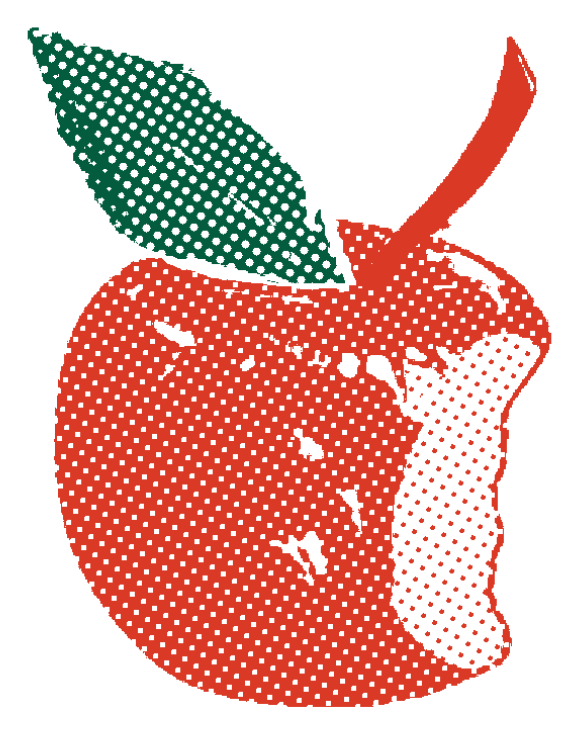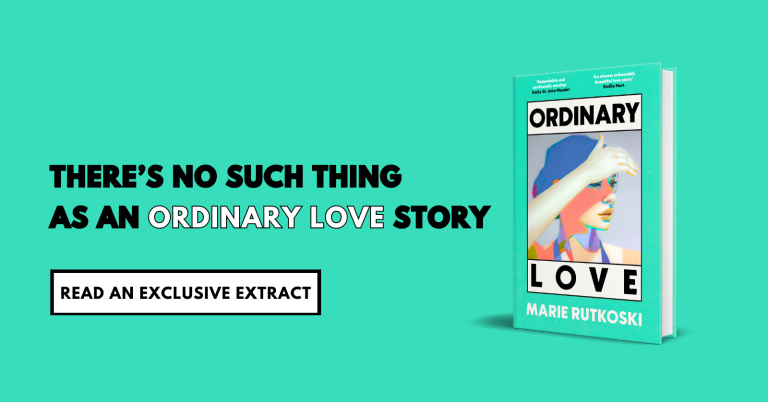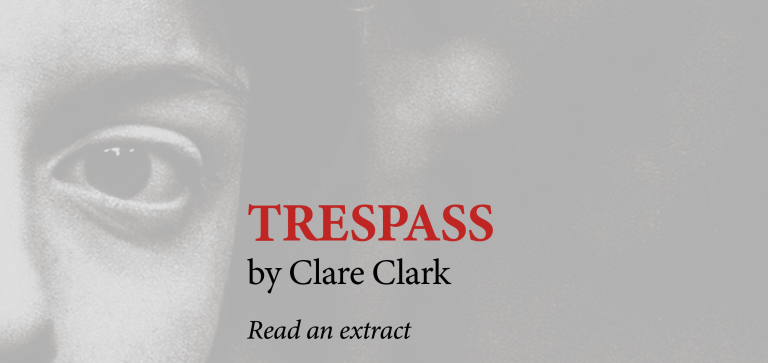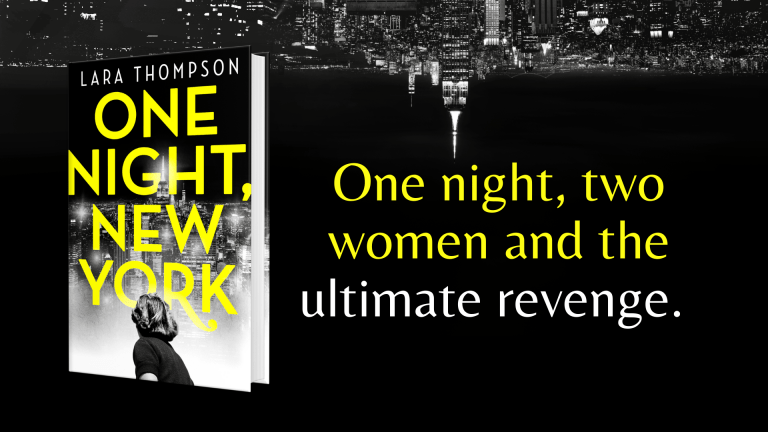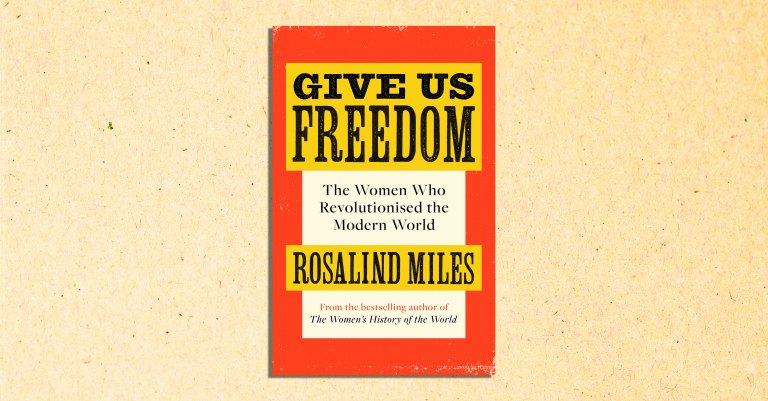Read an extract from Hormonal by Eleanor Morgan
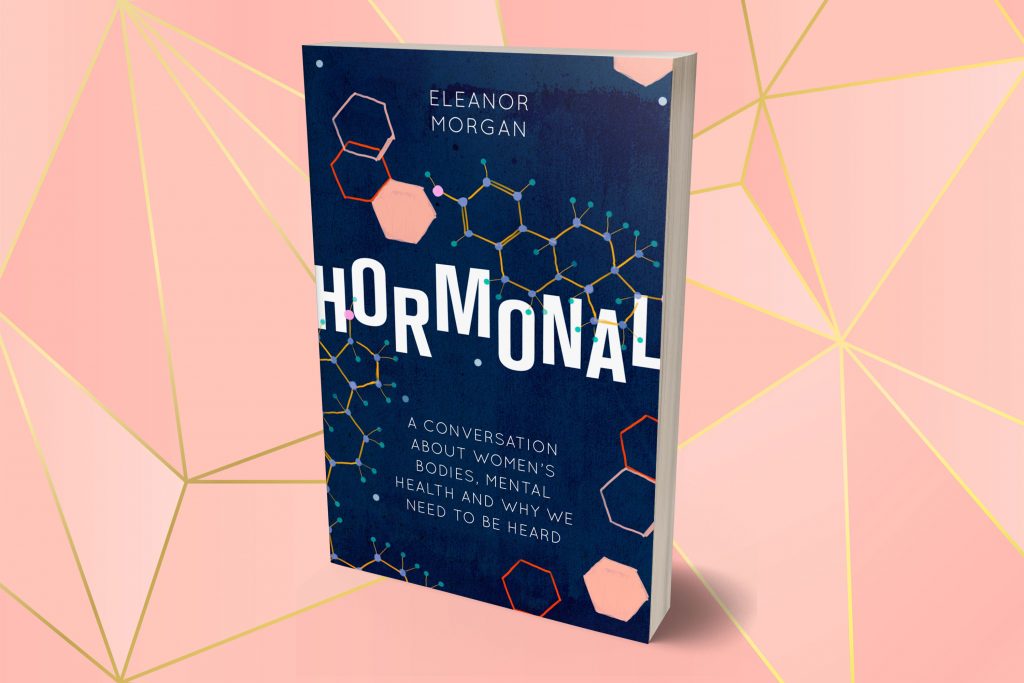
Hormonal by Eleanor Morgan explores everything from contraception to PMS, in relation to anxiety, depression and taboos about hysteria and the ‘hormonal’ woman. It is a compelling portrait of the modern landscape of women and health, showing us how to navigate stigma and misinformation.
Combining her own experiences with extensive research and expert contributions, Eleanor Morgan explores the relationship between the female body, the female mind and the ways in which women’s bodies are being medicalised. As Morgan argues, we’ve gotten better at talking about mental health, but we still shy away from discussing periods, miscarriage, endometriosis and menopause. That results in a lack of vital understanding for women, particularly as those processes are inextricably connected to our mental health; by exploring women’s bodies in conjunction with our minds, Morgan urges for new thinking about our health.
READ AN EXTRACT
PART ONE
THAT DAY
One day in our early lives as women, everything changes. We start bleeding. The beginning of our menstrual cycle, our fecundity, renders us different. In an instant we’re no longer child. I was on a crazy golf course overlooking Cromer pier when I experienced period pain for the first time. It was the summer holidays and I’d started my period while away with my dad, brother and sister, just before my fourteenth birthday. I’d taken to wearing my hair all scraped back and my abundant forehead was absorbing the north Norfolk sun with vigour. As I stared at a pair of wooden clown lips I had to putt my ball between, my lower body rippled with new sensation. It was a pain that didn’t fit inside my body. My pelvis hung suspended, like a bowling ball, threatening to burst from between my legs. That classic British coastal perfume, thick with sun- roasted kelp and old deep- fat- fryer oil, took the nausea that seemed to come with these sharp churns to another level. I had to sit down on the grass. I thought: this is crazy.
Girls at school talked about period pain. Some fainted in class or on the benches next to the netball courts because of it. One girl vomited all over her desk in a maths class and started crying before being led to the nurse’s office, the teacher’s hand gently holding the small of her back. These girls gained noble status. Their syncopes were crowns of maturity. To myself and others who hadn’t yet ‘started’, they seemed a different species because their bodies knew things ours didn’t. We non- starters used to ask each other how bad it could be, because we all knew what a stomach ache felt like. But for a stomach ache to have girls falling on their backs and puking into their pencil cases seemed wild.
Until I felt it.
This new pain burned through my thighs. My legs were like pipe cleaners as a teenager. That holiday they were so tanned they looked wood- stained. The blonde hairs on them caught in the light like fibreglass and, sitting on the grass, I wondered if I should start shaving above the knee (Mum had always said not to) like others did at school, rather than stopping at the cap. My thighs carried on burning. I explained to Dad that I didn’t feel well. He nodded and told me to just ‘sit quietly’. I was aware of the shift in his gaze towards me in a way that I absolutely did not have the language for. Only feeling.
Something set me apart from my younger sister. A vague sense of shame swam about me. A few days earlier we’d been in a four- man tent in Southwold and I’d sat by the zip feeling a peculiar nostalgia, or longing, that I couldn’t place. I told myself I was homesick, even though home wasn’t a particularly great place to be then. When we got to Cromer, I went to the toilet and found maturity in my knickers. An initial rush of excitement – I could go back to school and be part of the in crowd! The swooning girls! – gave way to a funny sadness. I had to leave the house immediately after telling Dad. It wasn’t quite embarrassment that made me leg it – he did his best to make it a non- thing; a mini- celebration, even – but in my core I felt uncomfortable. That whole holiday was one of heavy, wordless feelings.
I recall that afternoon on the golf course so clearly, I think, because the overwriting of what my body once knew as pain felt so significant at the time. The letters of the word p, a, i, n are symbols. Abstract. But there was a physiological process happening in my body and brain as it learned to accept this new state and its corresponding language. I began to embody the word differently. I had known pain before, of course. Broken fingers, headaches, tonsillitis, bruises, scratches and bite- marks from fighting with my siblings. This was different; it had texture. Emotion. I looked down at the grass and thought, for a split second, that it would never stop. That the pain was time itself.
Dad gave me the keys to go back to the house and take some ibuprofen. I made cat- like sobbing noises the whole way. Back at the house, I lay on the sofa waiting for the painkiller to kick in. No one had mobile phones yet so I couldn’t relay my woes to any friends on WhatsApp. Anguished emojis were years and years away. It was so quiet in that moment, apart from the pitiful cawing of seagulls (why do they always sound so desperate?) overhead. Strangely, though, it wasn’t lonely. The pain spoke to me. It told me my human fabric had changed. As evidence of the encoding that happened that day, now, on most occasions that I hear seagulls, I will have flash visions of lying on that sofa holding my young, tortured belly.
I’m in my thirties now and, ever since my first period, they’ve always been a slog. I’ve had my own swooning and vomiting episodes as cramps ripped through my body; not ever at school, but often in shopping centres. I learned to deal with what always used to seem to me like an excessive amount of blood, which came in a variety of colours and consistencies. As a teenager, when I was ‘on’ (why did we say that? Upon what did we stand and then step off again?) I’d be forever looking backwards at myself in mirrors to check I hadn’t leaked through my clothes: a steadfast paranoia that, although lessened, still lingers today.
I have spent quite some time now trying to gain autonomy over the way my hormones seem to make my mind and body behave each month. About five years ago a confidence-obliterating breakdown- of- sorts forced me to finally seek help for the anxiety that I had done my very best to conceal from everyone around me, including me, for well over a decade. At some point after that, in my ongoing quest for peace of mind, I started thinking about my menstrual health as part of my mental health. It was after a particularly bad period build- up one month, which felt like a week of tears-from-nowhere, overeating and spending too many evenings lying on my front in an existential torpor, that I went to my GP. I asked her if this could really ‘just’ be premenstrual syndrome (PMS).
Before the appointment I had somehow had the nous to start making a monthly diary (read: a series of symbols Sharpied on the Cliff Richard calendar my best friend bought me) and realised that this way of being and feeling crept up on me every couple of weeks, for a few days at a time. Notably, after my period, I’d have a week of feeling almost fantastic: productive, calm, resilient, porous to all the smell and colour of life. I say ‘almost’ because in the back of my mind I’d be worrying about feeling hijacked again. So I asked the doctor what I could do about feeling every single month like my soul was fermenting in a way I could not control.
Since then I have tried all sorts of interventions in my quest for emotional stability: more medications after several conversations with (almost exclusively male) gynaecologists that have made me feel either a) madder or b) ever so slightly less mad for a short amount of time; acupuncture; vitamin supplements; diet changes. Broadly speaking, this precise, reliable emotional state I sought was, is, elusive at best, impossible at most realistic. I will revisit my hormonal quest in much more detail later on; for now let’s just say that few of the interventions brought me relief. In time, through addressing all the above with a new psychologist, and in the research I did for this book, I began to see things slightly differently and asked myself: what am I seeking relief from? Even if I could control certain symptoms of my premenstrual distress – low mood, for example – and a type of drug was the answer, on a much deeper level I wanted to know: what is the question?
One important aspect of this journey was discovering what I knew, didn’t know or had forgotten, about what is going on inside my body: my baby- making machinery that, as yet, has made no babies, but for the love of god won’t stop preparing for them each month. I wanted to explore in detail what happens at each stage during the menstrual cycle, because, from conversations I’ve had with many women, it seems that a greater awareness of the physical process can help us not only to manage our moods, but also to conceptualise what a mood actually is: a state of being that is, by its nature, temporary. Whether that awareness comes from using a period- tracking app, keeping a diary, doing online research or reading books, the hope is that we can develop a greater level of acceptance of our fluctuations in mood and emotion.
There are women out there who seem able to embrace their premenstrual selves without much shame because there are lots of different ways of being a woman. As I am typing this I am thinking of a brilliant line from an episode in season two of The Good Fight. Lawyer Diane Lockhart, actress Christine Baranski’s multi- layered lead and also my hero, is accused by a young woman at the helm of a #MeToo- esque website called Assholes to Avoid of failing feminism for being part of the site’s takedown. ‘Women aren’t just one thing,’ she snaps, ‘and you don’t get to determine what they are.’
No woman gets to determine what another woman is, wants or desires.
In all the appointments I’ve had with GPs and gynaecologists I’ve been through a kind of re- education of what my body does and why. I have realised quite how little I remembered from my school education and felt quite ashamed by it. There’s a flash vision I often have of sitting in a hall at secondary school with the rest of my year, watching a TV that was showing a cartoon woman inserting a tampon. Any anatomical accuracy was dispensed with in favour of a vague, hairless triangle that only flashed into view for a second. She appeared to take her trousers down, unwrap the tampon’s packaging, position her body and push the thing up herself in one dainty movement. All with a big, shit- eating grin on her face. She was absolutely delighted about it all, our animated protagonist. Everyone giggled because, you know: vaginas. Obviously we learned more about sex hormones, puberty and reproduction in biology lessons (I even took biology as an A-level subject with a view of going to medical school) but until a few years ago when I had a sharp awakening regarding my fertility, I had forgotten a lot of it. Or had taken its function for granted.
In 2014, during an operation I was having to free up adhesions (bands of scar tissue) that were adhering my small bowel to my womb – part of the legacy of my burst appendix and all its gangrenous, bits- of- bowel- being- removed glory – the surgeon had received my consent to do a fertility test ‘while they were there’, like a bike mechanic might check your chain while repairing your brake cables. To do this they injected an iodine- containing dye into my womb to see if it came out the ends of both fallopian tubes. If it didn’t, I might never be able to conceive without medical intervention. In recovery, as I was gingerly eating digestive biscuits and doing my best to pay attention through an opiate haze, the surgeon told me my fallopian tubes were damaged by scar tissue. I’d have to consider IVF if I wanted to become pregnant, or egg and/or embryo freezing. As the morphine flowered in my blood, I promptly vomited into one of those cardboard top hat things before the surgeon had finished talking.
After a year on the waiting list at my local NHS hospital, I embarked on the process of embryo freezing. With donor sperm bought from a bank in New York (I am a woman who sleeps with women: sperm is a little low on the ground around here), I ended up with five embryos ready to spend some time on ice. I think about them sitting in the freezer at my local teaching hospital often. During this gruelling process, I learned more from the doctors and nurses about what actually happens during the menstrual cycle, how my ovaries and hormones work, than I think I ever had before in my life. How bizarre that it took having fertility treatment to learn about myself, an adult woman who had been menstruating for nearly twenty years. Or was this awakening, of sorts, so unusual?
Through frank discussions I have had with other women – family, friends, colleagues, research participants, sources for my journalistic work, strangers on social media – I have realised I am far from the only woman to have lived in a kind of disconnect from their body. We are everywhere. So at what point should we, like a London cabbie acquiring the ‘Knowledge’ of London’s back alleys and one- way systems, have acquired the ‘Knowledge’ of our bodies? How could I have fallen so out of sync with what makes me me?
It feels like there is a movement happening regarding women’s health right now. Menstrual- cycle tracking apps like Clue are becoming increasingly popular. Female entrepreneurs are creating new sanitary product businesses left, right and centre. More and more magazine articles are being written about previously ‘icky’ subjects like vaginal health, our menstrual cycles and the realities of menopause. We’re talking more about the tyranny of ideals around birth control, conception, pregnancy and women’s experiences of giving birth. We’re talking about how the medical establishment doesn’t always listen to our specific needs as women and how, when we’re failed by healthcare, the effect on our sense of self can be catastrophic.
When I wrote an article for the website The Pool about how PMS was often poorly understood and routinely dismissed in modern healthcare, I received more messages from readers than I have about any article I’ve ever written. So many women shared the article with variations on ‘thank god someone is saying it’, and with details of how their own experiences had been diminished or stigmatised. In my day-to-day life I have noticed that in the last couple of years the women I know increasingly want to talk about aspects of their health they may have previously felt shy about. It is as though a thick, collective cork is being slowly winched out of us. Yet beneath the tentative conversations of liberation, the bottle is still full of mystery, ignorance and stigma regarding our bodies. It warrants our examination.
We must ask ourselves why, for example, cervical smear testing rates among young women have plummeted when case numbers of cervical cancer are increasing. When asked why they are reluctant to have a smear test, many young women speak about ‘being judged’. The fear around having a smear test is not just about whether it will hurt when the speculum is put inside us, it is about how we feel our bodies will be perceived; whether our genitals look or smell ‘right’, for example. This gaze we cast on ourselves is an internalised male gaze – the product of not just the shiny, hair- free expectations of porn, but centuries of patriarchal oppression over our bodies in general. We are ashamed of what makes us women because deep down we believe that, in someone’s eyes, it will never be quite right; that it will be too much.
The relationship we have with our body and what goes on inside it is deeply complex. Our reproductive systems are designed to grow babies and constantly prepare for them–even if we don’t want them – and the hormonal fluctuations behind our reproductive processes mean that the workings of our inner world are often in collision with the outer world and all the expectations we perceive it to have of us. I am very interested in how society’s continued perceptions of women affect our perceptions of ourselves. My personal experience of seeking treatment for PMS and for the sadness, heightened sensitivity and anxiety I can feel during my cycle, only to reach the point where I effectively ran out of treatment options, made me realise how entrenched my analysis of my own thoughts and behaviour was in more general ideas of how I ‘should’ or ‘shouldn’t’ be as a person; a woman.
This book is underpinned by my own journey of becoming more knowledgeable about myself and accepting the emotional changes I feel over the course of my cycle, rather than seeing the changes as a pathology, forever scrutinising and labelling. It also became clear to me while researching the history of how society has understood, treated and talked about women’s physical and mental health, that from the Hippocratic beginnings of medicine to the present day, our collective knowledge and attitudes have been shaped by the hubris of powerful men.
We know a lot more about what’s going on inside us than we did in 460 bc, but we women have never quite lost the air of being mysterious creatures prone to physical and emotional excesses that, ultimately, need containing. When it comes to our bodies, in so many areas, our voice and our autonomy continue to be the weakest currencies. Someone always claims to know better. Medicine has an inherent bias against women. Women presenting at hospitals with pain are not only given fewer painkillers than men but are often offered sedatives instead (because we’re easier when we’re quieter). Treatment for women with coronary heart disease is delayed compared to men. All these facts are corroborated by robust data. When a woman says how she feels, what she wants or what she needs, someone – usually a man, or a system founded by a man – always knows better.
We can link women’s biology as a source of oppression throughout history, and pejorative terms like ‘hysterical’, to the modern- day experience of women – both individual and collective – in so many ways. The massive societal reckoning that is happening in the wake of the #MeToo movement, for example, has led us to examine why so many women’s horrific experiences of abuse have been disbelieved or minimised, and why so many women have felt powerless to speak out about something so painful. To me, the very concept of pain is key to why believing women is not a given, and to understanding our continued oppression. Because the reality is that, as women, our pain is not often taken at face value, and we know it.
Physical or emotional, the meaning of our pain has always been up for grabs, swallowed or dismissed by systems more powerful than us as individuals. Still, too, it is often the case that the louder we shout about our pain, the more we are told that we’re causing trouble and the less likely we are to be taken seriously. Knowing why this is still the case in so many areas of society gives us something to work with and rally against.
This is a book about reclaiming meaning; about drawing a connecting thread between what history has told us about who and what we are, all the ways in which our so- called ‘excesses’ have been watched and contained, and the peace that can be found in trying to accept our inherent variability rather than forever striving to be or feel a certain way. A better understanding of what goes on inside us, of the connection between our bodies and minds, is an important part of that. So, too, is a greater awareness of all the external factors that may affect our bodily experiences, including the way modern medicine still doesn’t take the variance of women’s pain – or the voice describing that pain – seriously.
There is power in knowing ourselves better. We are not Post- Biology. We are protecting no one by pretending that we don’t bleed; that our bodies, in preparing for and bearing children, don’t make a mess. We are not reducing ourselves or undoing all the equality women have fought for by learning to embrace our messy selves. In fact, I’d say we’re doing the opposite. So, let’s start by going beneath the skin . . .
